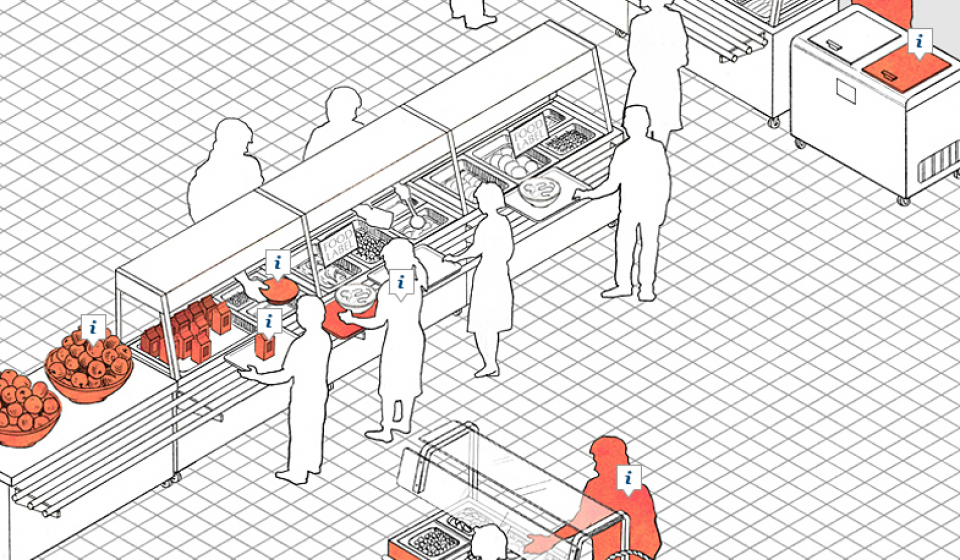We know from the Theory of Constraints that every system has a bottleneck via effective lunch line design. The goal, then, isn’t to eliminate the bottleneck, but learn how to manage the overall system by effectively managing the constraint in that system. This is true in most cases. But, there are cases where purposely creating a bottleneck can obtain the desired outcome. Thus is the case with preventing Childhood Obesity and the Lunchroom.

A research cooperative called Smarter Lunchrooms is in the business of helping students make smarter choices by subtly changing their behavior. They use ideas from behavioral economics and psychology to guide better choices. One really interesting case study involves the wise implementation of a bottleneck.
The experiment looked at guiding the choice of regular skim milk versus chocolate milk and soda. So, this group partnered with a school to change the layout of the lunchroom and placed the chocolate milk and soda in an area where it was difficult to get to and only very few children could be there at any one time. At the same time, the school then placed the regular skim milk in an area where it was easily accessible.
Their findings: chocolate milk and soda sales went down and the sales of regular skim milk went up.
Here is an example where the implementation of a bottleneck led to better outcomes. And, the subtlety of the design likely went unnoticed by the children, yet they made better choices without even knowing they were making better choices.
The upshot?
Initiatives and approaches like this are wise, low cost, but effective ways at addressing childhood obesity.








Pete,
Richard Thaler and Cass Sunstein wrote about this kind of subtle behavioral adjustment in their book, “Nudge.” It’s the thinking behind having employees by default opted-in to retirement plans. I hadn’t heard of this example, however.
Those nudging experiments are really interesting, but I worry that our understanding of metabolism and diet are poorer than we admit, thereby causing more harm than good by those nutrition advice and influence.
For example, is it consumption of fat and lack of physical exercise that cause obesity, diabetes and heart diseases? Or is it high consumption of sugars and refined carbohydrates (which cause insulin-resistance, which leads to the above problems)?
Gary Taubes surveyed the medical literature and found little evidence for the former and better evidence for the latter. Yet nutrition officials still fight against fat and promote grains…
He summarized what he found in a recent interview (and he also has a book and other videos online): http://www.econtalk.org/archives/2011/11/taubes_on_fat_s.html
Btw, Dan Ariely posted about another such “nudge” experiment just two weeks ago: http://danariely.com/2012/02/08/an-alternative-to-calorie-labels/
What they really need is “trimming” technique – get rid of the milk and soda! But I think this is just a case of tuning the symptoms instead of finding the root cause!